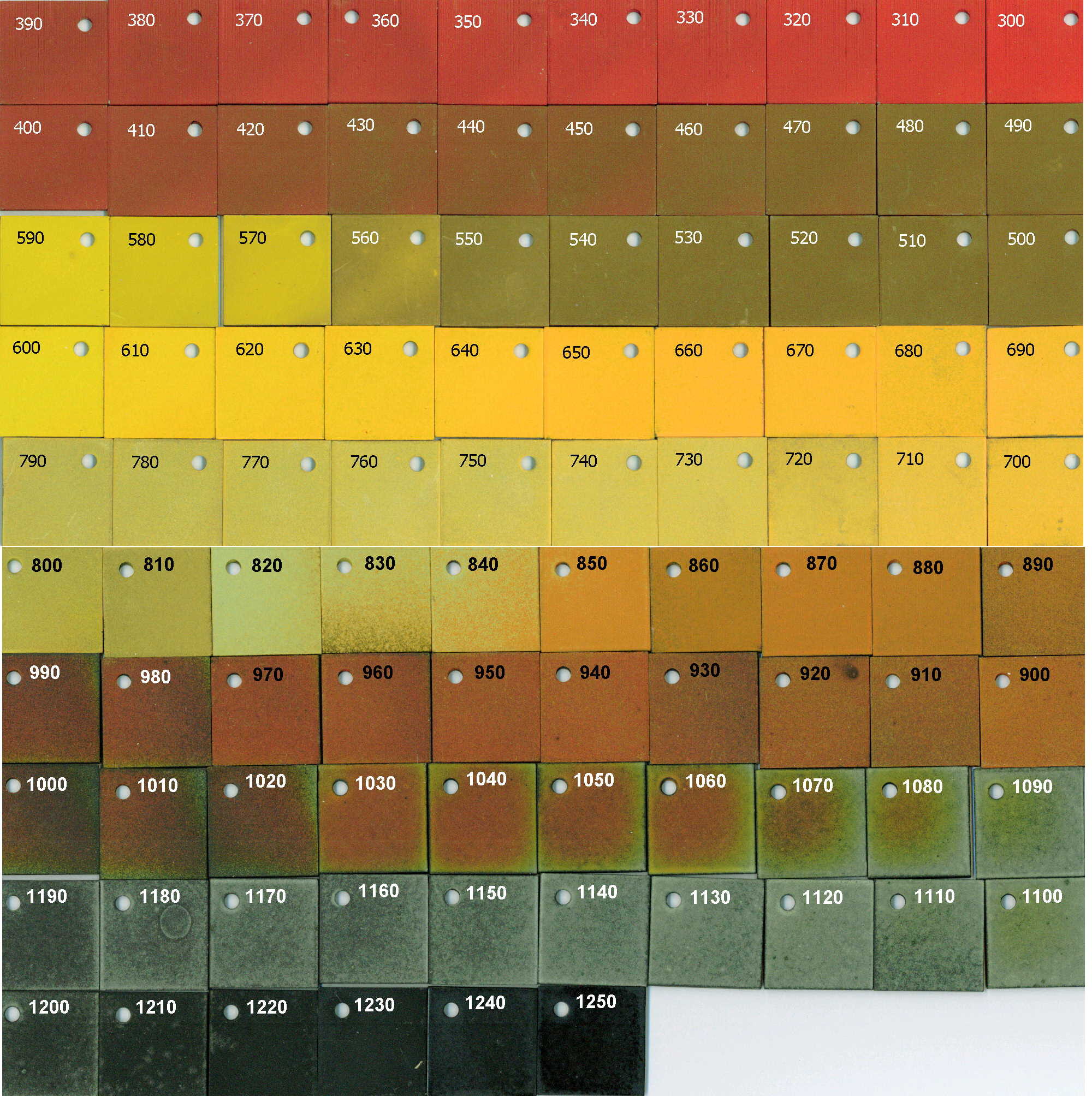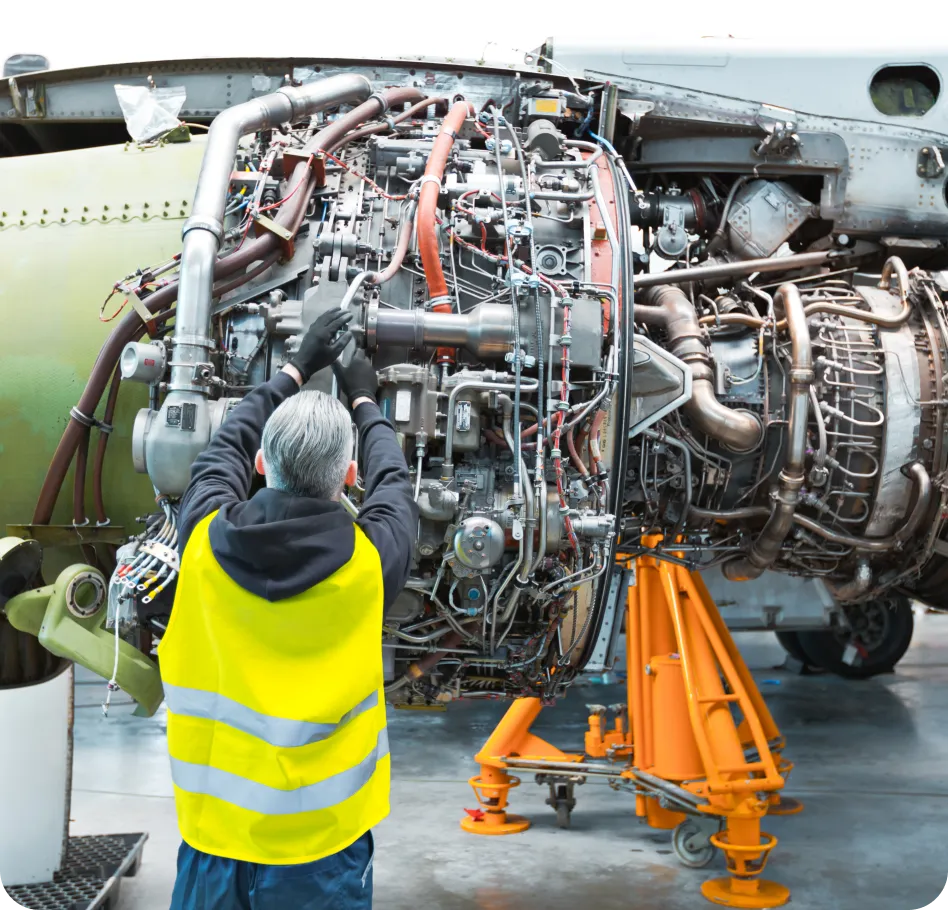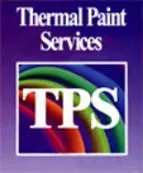
Example of coupon calibration at 10°C interval
Accuracy
Accuracy depends significantly on the paint calibration process.
TPS Calibration Process
TPS has carried out calibrations of most of its paints for 2, 5, 15, 30, and 60 minutes.
Wide Temperature Testing Capability
The paints offer accurate results between the temperatures of 176 °F – 2516 °F (80 °C – 1380 °C). Paints can provide accuracy of up to ±18 °F (±10 °C) at isotherms drawn between 2 colors.
Temperature Measurement on Rotating Parts
Previous technologies have proved to be insufficient to truly and accurately examine the temperature profiles of parts that are rotating, such as the turbine blades. Attaching thermocouples to rotating parts through slip rings was not an exact science, and great skill is required to produce an average result. Again, high-frequency pyrometers require great skill and can only return spot temperatures on accessible areas of the surface being tested.
Why Use Thermal Paints?
Simplicity
After painting components of an engine with Thermal Paints, a standard engine test is performed and a trained naked eye, during the paint analysis phase, can examine the whole surface and find the existence of any hot spots. This is in comparison to thermocouple tests that are difficult to perform and provide spot temperatures only. With paints, a complete surface is tested, as opposed to specific parts of the engine that thermocouples or a high-frequency pyrometer can be attached to or pointed at.
Low Cost
Customers have reported up to 70% reduction in their engine testing costs and turn time by up to three times less with Thermal Paints. Each customer's needs are different, but there are many reasons for the reduction in these costs. Such reasons include:

Negligible Testing Deviation
The layer of paint has a thickness of about 0.03 mm (0.001 inches) which does not affect the aerodynamic performance of the component under test. This is in comparison to aerodynamic disturbances caused by the gas flow due to uneven surface finishes resulting from thermocouples attached to surfaces. The estimation of error for thermocouple testing has become a science within itself. Even with such a high-tech level of result generation, a level of guesswork still has to be incorporated, resulting in lower levels of accuracy and quality in testing. Thermal Paint with its negligible interference offers a replication of the non-test scenario standard operation and, therefore, improved accuracy in replicating the results that will be seen when the product is operating in the field.
